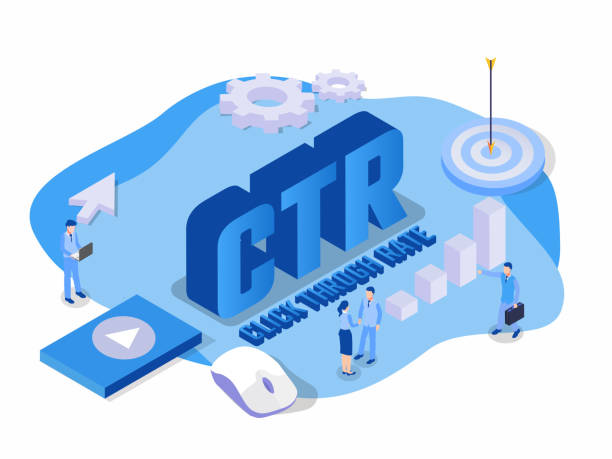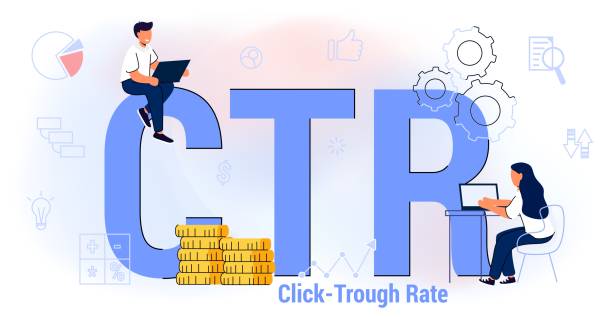

Click-through rate (CTR) optimization is crucial for the success of any digital marketing campaign. CTR measures the effectiveness of an ad or a piece of content by showing how many people clicked on it compared to how many times it was shown.
By optimizing CTR, marketers can increase the number of users who engage with their content, leading to higher conversions and ultimately more revenue. This is especially important in today's competitive online landscape, where consumers are constantly bombarded with advertisements and information.
One key benefit of CTR optimization is that it helps businesses reach their target audience more effectively. By analyzing which ads or messages are resonating with users and driving clicks, marketers can tailor their campaigns to better appeal to their desired demographic.
Additionally, improving CTR can also have a positive impact on overall search engine rankings. Search engines like Google take into account user engagement metrics such as CTR when determining the relevance and quality of a website. By increasing CTR, businesses can improve their visibility in search results and attract more organic traffic.
In conclusion, CTR optimization plays a vital role in digital marketing success. By focusing on improving click-through rates, businesses can enhance user engagement, increase conversions, and ultimately drive growth. It is essential for marketers to continuously monitor and optimize their CTR to stay ahead in the competitive digital landscape.
Click-through rate (CTR) is a crucial metric in the world of digital marketing. It measures the percentage of people who click on a specific link, advertisement, or call-to-action after seeing it. Understanding the factors that influence CTR is essential for optimizing your campaigns and maximizing their effectiveness.
There are several key factors that can impact CTR, including the relevance of your ad copy or content to your target audience, the placement and visibility of your call-to-action buttons or links, and even the timing of when your ads are displayed. By analyzing these factors and making adjustments accordingly, you can improve your CTR and ultimately drive more traffic to your website or landing page.
One important factor to consider is the quality of your ad copy. Is it compelling and engaging? Does it clearly communicate what you have to offer? Ensuring that your messaging resonates with your target audience is crucial for driving clicks.
Another factor to keep in mind is the placement of your call-to-action buttons or links. Are they easily accessible and prominently displayed? Making it as simple as possible for users to take action can significantly boost your CTR.
Timing is also key when it comes to optimizing CTR. Consider when your target audience is most active online and schedule your ads accordingly. By reaching them at the right time, you can increase the likelihood of engagement.
In conclusion, understanding the factors that influence CTR is essential for optimizing your campaigns and achieving success in digital marketing. By focusing on relevance, visibility, and timing, you can improve your CTR and drive more valuable traffic to your website.

In today's digital age, Google Maps has become an essential tool for navigating our way through the world.. From finding the nearest coffee shop to mapping out a road trip, Google Maps provides us with invaluable information at our fingertips.
Posted by on 2024-04-18

Google Maps is a powerful tool that has revolutionized the way we navigate and explore our world.. With its vast database of maps, satellite imagery, and street view photos, Google Maps has become an indispensable tool for travelers, businesses, and everyday users alike.
Posted by on 2024-04-18
Improving click-through rates (CTR) is a crucial aspect of any digital marketing strategy. A high CTR indicates that your ads are resonating with your target audience and driving traffic to your website. There are several strategies that can help improve CTR, including crafting compelling ad copy and using targeted keywords.
One of the most important factors in improving CTR is writing compelling ad copy. Your ad copy should be engaging, relevant, and persuasive. It should clearly communicate the benefits of your product or service and entice users to click on your ad. By focusing on creating compelling ad copy, you can increase the likelihood that users will click on your ads and visit your website.
Another key strategy for improving CTR is using targeted keywords. Keywords play a crucial role in determining when and where your ads are displayed. By conducting keyword research and identifying relevant keywords for your target audience, you can ensure that your ads are showing up in front of the right people at the right time. Using targeted keywords can help increase the likelihood that users will click on your ads, leading to higher CTRs.
Overall, improving CTR requires a combination of strategic planning, creative thinking, and continuous optimization. By focusing on crafting compelling ad copy and using targeted keywords, you can increase the effectiveness of your digital marketing campaigns and drive more traffic to your website. Remember to regularly monitor performance metrics and make adjustments as needed to ensure that you are maximizing the potential of each campaign.
A/B testing and data analysis are essential tools for measuring the performance of click-through rates (CTR) when it comes to optimizing topics. By conducting A/B tests, marketers can compare two versions of a webpage or content to see which one performs better in terms of CTR. This allows them to make informed decisions about the best strategies for increasing user engagement and driving traffic to their website.
Data analysis plays a crucial role in this process by providing insights into user behavior and preferences. Marketers can use data to identify trends, patterns, and correlations that may impact CTR performance. By analyzing this information, they can refine their content and design strategies to better resonate with their target audience and ultimately improve CTR.
When it comes to topic CTR optimization, A/B testing and data analysis work hand in hand to help marketers understand what topics are most engaging to their audience. By testing different topics and analyzing the results, they can tailor their content strategy to focus on subjects that generate the highest CTR.
Overall, A/B testing and data analysis are powerful tools for measuring CTR performance and optimizing topics for maximum engagement. By utilizing these techniques effectively, marketers can ensure that their content is resonating with their audience and driving valuable traffic to their website.
Click-through rate (CTR) is a crucial metric for measuring the effectiveness of online advertising campaigns. The higher the CTR, the more likely it is that users are engaging with your ads and taking action. To enhance CTR on platforms like Google Ads and social media, there are several tips and strategies you can implement.
One key tip for optimizing CTR on Google Ads is to ensure your ad copy is compelling and relevant to the keywords you are targeting. Use strong calls-to-action that encourage users to click on your ad, such as "Shop Now" or "Learn More." Additionally, make use of ad extensions like sitelinks and callouts to provide additional information about your products or services.
On social media platforms like Facebook and Instagram, it's important to create visually appealing ads that stand out in users' feeds. Use high-quality images or videos that capture attention and convey your brand message effectively. A/B testing different ad creatives can help you identify which ones perform best in terms of CTR.
Another tip for enhancing CTR on both Google Ads and social media is to target your ads towards specific audience segments. By using targeting options such as demographics, interests, and behaviors, you can reach users who are more likely to be interested in your products or services.
In summary, by focusing on creating compelling ad copy, utilizing ad extensions, creating visually appealing ads, targeting specific audience segments, and constantly testing and optimizing your campaigns, you can enhance CTR on different platforms like Google Ads and social media. By implementing these tips, you can increase engagement with your ads and ultimately drive more conversions for your business.
CTR optimization is a crucial aspect of any digital marketing campaign. By increasing the click-through rate (CTR) of your ads or website, you can boost traffic and ultimately improve your overall conversion rates.
One way to learn about successful CTR optimization strategies is by studying case studies. These real-life examples provide valuable insights into what works and what doesn't when it comes to improving CTR.
For example, one case study might show how a company revamped their ad copy to be more compelling and relevant to their target audience. This simple change led to a significant increase in CTR, as users were more likely to click on the ad when it resonated with their needs and interests.
Another case study might highlight the importance of A/B testing different elements of a landing page to see which version yields the highest CTR. By experimenting with headlines, images, call-to-action buttons, and other components, marketers can identify the most effective combinations that drive user engagement.
Overall, case studies of successful CTR optimization campaigns offer valuable insights for marketers looking to improve their digital advertising efforts. By learning from others' successes (and failures), you can fine-tune your own strategies and achieve better results in terms of CTR and overall campaign performance.